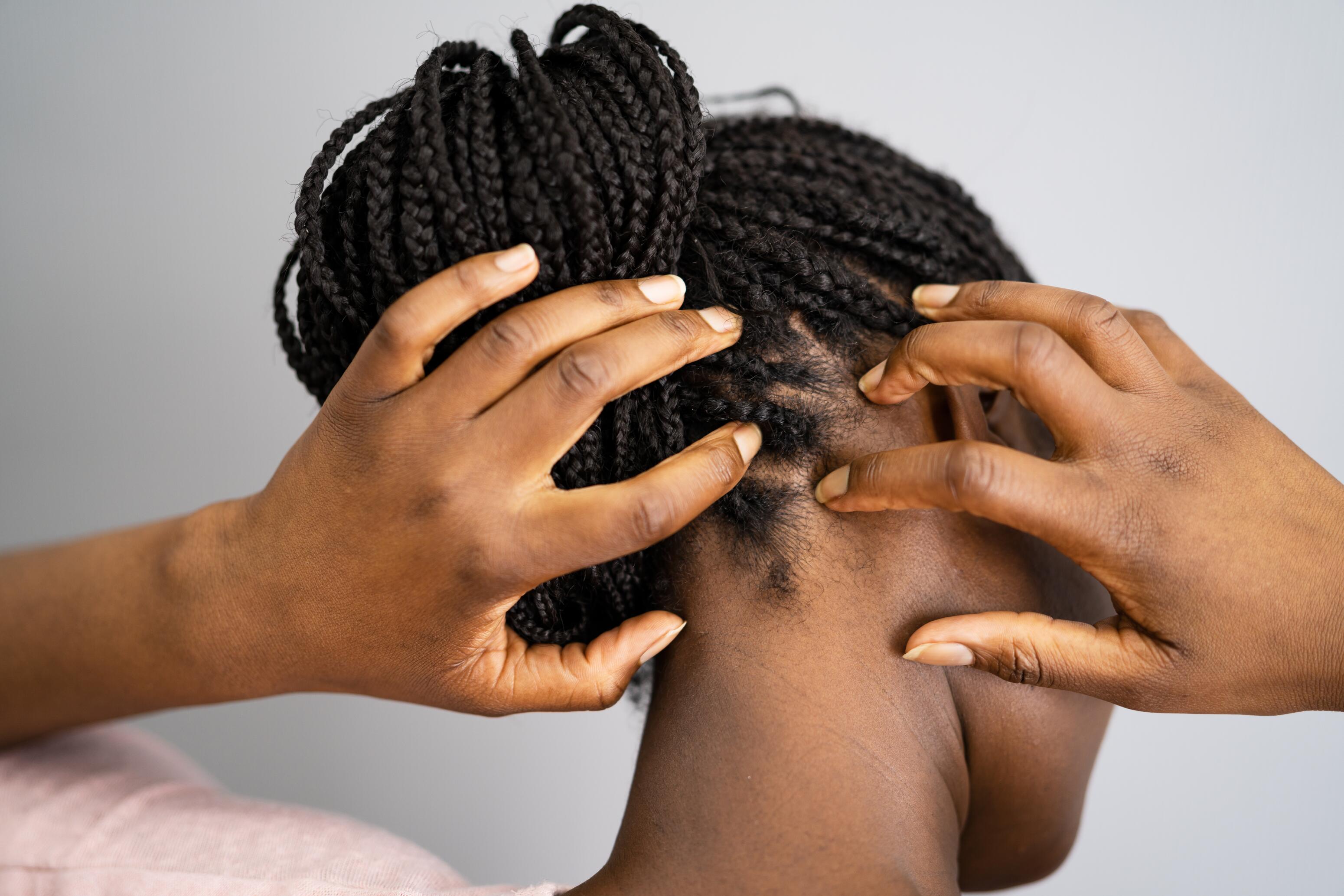Traction alopecia and coily hair: dangerous connections
More frequently subject to braids and hair extensions, curly and coily hair in black and mixed-race women is subject to pulling which, when repeated, have a direct impact on the hair follicle. Overly heavy hairstyles pull on the scalp and slowly separate the hair fiber from its root. The result: traction alopecia and localized hair loss, often affecting the temples and forehead, where the hair is thinner and thus more fragile.
Is there a solution for traction alopecia?
Wearing your hair down and loose remains the ideal natural treatment to fight against traction alopecia. If you struggle with the idea of not being able to wear your hair up, try loosening your ponytail and opt for a fabric scrunchie over an overly tight elastic. Avoid frequent use of relaxers and weaves: no more than four per year.
Above all, be sure to consult a specialist to determine the best treatment for traction alopecia. For example, the revitalizing gel stimulates the hair and helps nourish the hair bulb.

